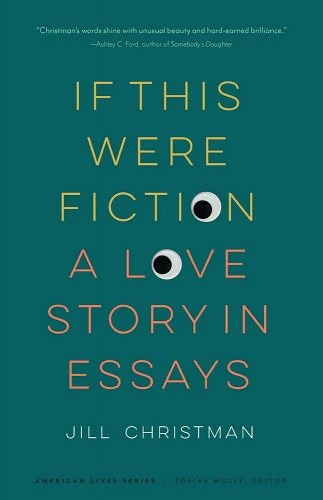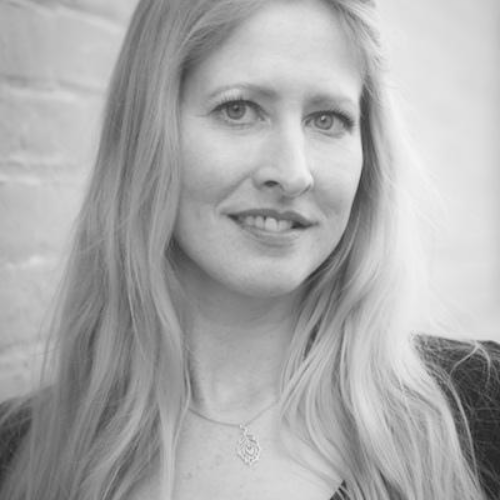Reviewed by Angela L. Eckhart
We get to wear crop-tops and tight jeans with a ribbon of lace for a belt and high-heeled boots. We get to check ourselves thirty times in the dorm-room mirror…, and we even get to guzzle sweet drinks and swallow harmless-looking tabs we hope might make us feel better or dance faster or look prettier or just forget.
***
 Jill Christman has something to say, and her declarations probably echo those of so many others. But yet, following her insight, she proclaims, “And we still don’t deserve to be raped.”
Jill Christman has something to say, and her declarations probably echo those of so many others. But yet, following her insight, she proclaims, “And we still don’t deserve to be raped.”
This is from one of 18 essays penned by seasoned, published writer, Jill Christman (writing professor at Ball State University and senior editor of River Teeth) in her new collection, If This Were Fiction: A Love Story In Essays (University of Nebraska Press, 2022). Edited by Tobias Wolff, the collection contains previously published essays from various literary publications which had been endorsed and praised by the likes of many prominent writers, such as Dinty W. Moore and Ashley C. Ford, among others.
Like her message above from her essay “Slaughterhouse Island,” Christman shares her deeply personal stories, from harrowing and humorous to heartfelt and humble, with transparency and honesty. “Truth is complicated,” she writes, “and we all know that facts can lie. There is always a level more true: true, truer, truest—and then something beyond that we will never reach.” Her essays succeed in portraying and examining her truths. Topics include her fiancé’s tragic death, childhood molestation, finding love again, and motherhood.
The collection is organized around an E.E. Cummings poem, with three lines of the poem thematically framing each of the three parts. Part 1 is titled since feeling is first, Part II is titled we are for each other, and Part III is titled And death i think is no parenthesis. Each part contains six essays in varying lengths.
In her essays, only one of which is written in third person, Christman examines her early years, her relationships, her hopes, dreams, and fears. While the collection is dedicated to her husband, many of the stories do read like love letters to her children, and even to herself. She manages to overcome and try to heal from past traumas by coming to terms with specific tragic events. Through writing these essays, she surmised, “…that good writing and good therapy share similar goals and methods.” Writing has proven to be therapeutic, and most times revelatory. Her fears for her daughter are justified based upon her own experiences.
For example, in “Going Back to Plum Island,” Christman revisits a traumatic time of her childhood when an older boy molested her for about five years. He suddenly showed up in her dreams around the time her daughter was around the same age she had been at the time it happened. Her anxiety builds when she plans a trip back to her childhood home to confront her past, not knowing if the perpetrator still lived there. Christman’s emotions are palpable in her writing; I felt her trepidation and unease through her descriptions.
Even within the disturbing scenes, Christman offers glimpses of fleeting beauty and even hope, like seeing a rainbow amidst a storm. She takes a photo of her molester’s house, “and the photo is dirty snow, brown sand, gray roof, yellow house—all muted, tired—and then a flash of deep red in the side mirror that I recognize to be my wool coat. This fragment of me looks like a cardinal in a shrub.” The juxtaposition in her word choice is astute, such as, “There was nobody home in the big new house that stood regally where our one-story cottage had once squatted.” Sentences like that feels like finding a gemstone among regular rocks. Her realization in the essay becomes a message to her children: “I want Ella and Henry to know, always, that it’s okay to tell the truth, to name names and make noise, no matter what. I want them to lay down shame and be brave.” This should be a universal sentiment to all children.
While I cannot relate to being a mother, I can fully appreciate her vivid details and ability to convey what it is like to grow a baby. I am amazed how she compares pregnancy with the mundane—filling cracks in a sidewalk—in order to make sense of the breadth of her emotions. When pregnant with her daughter, she states, “How would I know where I stopped and she began? Maybe we wouldn’t. Maybe the space between us wouldn’t look like a crack to be filled in but something more like water or blood or air, a space we could move through without feeling the jolt of the crossing, or even the bump of the seam.” She then realizes that she wants “the love we can never see but know is there.” The writing is poetically beautiful and philosophical.
Alternately, when describing the birth of her son, her images are raw and mesmerizing, yet heartfelt. “I felt the searing burn, on fire but not really a pain now, just flame…. I pushed him out and guided his slippery body with my own hands up onto my waiting chest and our side of this crazy, hot, shifting, heartbreaking, beautiful world.” Christman is adept at finding the right words to describe things in a new, original way.
One of my favorite essays is “The Eleven-Minute Crib Nap,” once again because of her perceptive descriptions and slight humor, written in a way that does not seem intentional. The witty parts just sneak up on you. She has her students’ papers to grade, but Ella falls asleep while nursing. All Christman needs to do is transfer said sleeping infant to the crib. Problem solved.
But when I rose from the chair, walked the three steps to the crib with all the stealth of a cat burglar, and started to tip Ella’s meticulously supported head toward the mattress, her lids popped open like those of the long-lashed baby dolls of my childhood with their disturbingly glossy marble-blue eyes. Except in reverse. The eye-popping happens when I lay Ella down, not when I tilt her up. Tip. Pop. Hair-curling scream.
Christman’s writing is direct, and she does not attempt to censor what she truly needs to say. I can relate to the feeling of not wanting to move when there’s a warm body on my lap or chest. She thinks, “I am a slave to my baby,” and yet I say the same thing about my cat.
While reading these essays, I shed some tears (“The Baby and the Alligator”), laughed (“Naked Underneath Our Clothes”), and bristled (“Leading the Children Out Of Town”), but mostly I was in awe over such empathetic and powerful writing which transported me from the ordinary to the extraordinary. Her collection encompasses a breadth of emotions, and I felt as if I soaked up more knowledge through her stories.

Angela L. Eckhart
ReviewerAngela earned her M.A. in creative writing from Wilkes University. She’s edited two books for local authors and worked as an adjunct writing professional at her local community college for two semesters. She has completed a novel, is currently working on a memoir, and has been reviewing books for Hippocampus magazine since 2011, where she previously served as Book Reviews Editor for several years. She’s a staple volunteer at HippoCamp, and she’ll be participating in the Belize Writer’s Conference, as well as her bi-annual writing retreats.



Dear Angela,
I just happened across this review–which I somehow didn’t see when it was first posted back in June–and wow, thank you! I’m grateful to you for spending time with my words–even the tough ones–and for, you know, getting my sense of humor.
Here’s to holding warm bodies & feeling brave enough to fly,
Jill